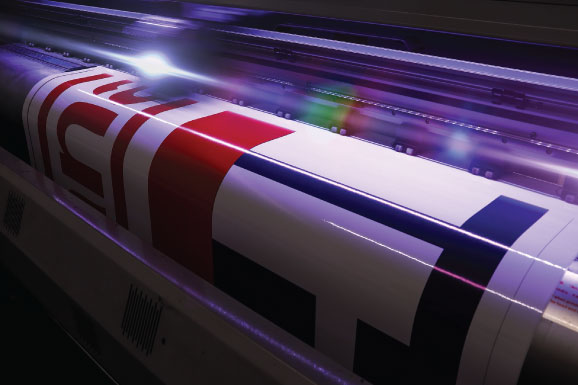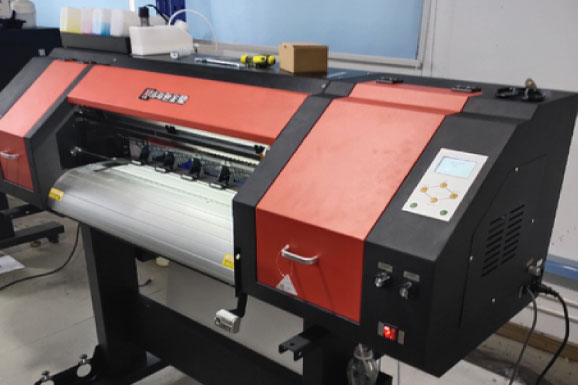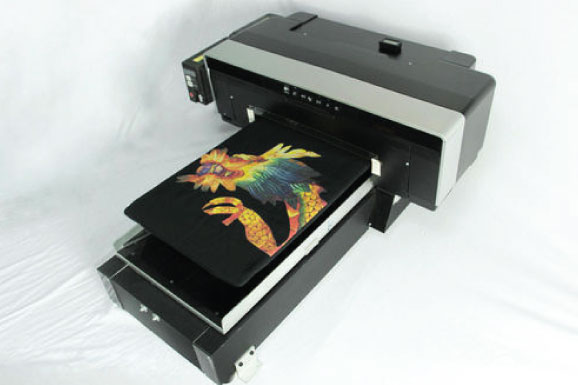
DTG Printing vs. DTF Printing: Which is Still the Best Option?
The epidemic has led tiny studios to focus on Print-on-Demand manufacturing. With it, DTG and DTF printing have entered the market, piquing the attention of manufacturers interested in dealing with personalized clothes.
Direct-to-garment (DTG) has long been the most popular method for t-shirt manufacturing and small runs, but in recent months, Direct-to-film (DTF) has gained traction in the industry, gaining more supporters each time. To comprehend this paradigm shift, we must first comprehend the contrasts between the two methods.
Small products or customization, such as T-shirts or masks, might benefit from both styles of printing. In all circumstances, however, the outcomes and printing procedures are different. As a result, deciding which one to use for a business may be challenging.
There isn’t a single technique called the “Master of Prints.” Many shops that have progressed beyond the early starting stage have realized that there is no one item that consumers want and that not all materials can be printed on. Alternatively, this addresses any customizations issues.
Every technology has advantages and disadvantages. What are the disadvantages of DTF (direct-to-film) printers, which are the newest technology on everyone’s wish list?
Is the customized T-shirt printing business going to be taken over by DTF printers? Or have the same impact that white toner printers had four or five years ago (and continue to have today)?
But first, some errands:
DTG:
- It necessitates pre-treatment: In the case of DTG, the procedure begins with the clothes being pre-treated. This step is required before printing since we will be working directly on the cloth, and the ink will need to be thoroughly fixed in order to avoid it transferring through the fabric. To activate this procedure, we’ll also need to heat the garment before printing.
- Direct-to-garment printing: Because DTG prints directly to garments, it can be a faster procedure than DTF because there is no need for a transfer.
- Use of white ink: We can use a white mask as a basis to guarantee that the ink does not mix with the color of the medium, although this is not always essential (for example, on white bases), and it is also feasible to decrease the use of this mask by just using white in certain locations.
- Cotton printing: We can only print on cotton clothes using this sort of printing.
- Last press: At the end of the procedure, we must execute a final press to set the ink, and then our garment will be ready.
DTF:
- There is no need to pre-treat the fabric with DTF printing because the design is pre-printed on a film that will have to be transferred.
- Printing on film: At DTF, we print on film and then transfer the design to fabric. When compared to DTG, this can make the procedure take a little longer.
- Adhesive powder: For this sort of printing, an adhesive powder will be utilized just after the ink has been printed on the film. This step is contained in the printer itself on printers particularly designed for DTF, so you don’t have to do anything manually.
- Use of white ink: In this situation, a layer of white ink must be applied over the color layer. This is the one that is transferred to the cloth and acts as a foundation for the design’s primary colors.
- Fabric of any kind: DTF has the benefit of allowing you to deal with any type of cloth, not only cotton.
- Transferring the image from the film to the fabric: The printed film is then transferred to the cloth using a press in the last phase of the procedure.
What exactly is DTF printing, and how does it function?
In the same manner that DTG stands for direct-to-garment, DTF stands for direct-to-film. DTF is an inkjet transfer printing technology that combines inkjet printing with a hot melt “glue” and a transfer film.
Consider it analogous to generating white toner printer transfers. An LED printer prints your picture onto a film using white toner printers. After that, you heat press it onto a glue sheet. After “marrying,” you’ll have a full-color transfer that’s ready to use.
With DTF printing, you use an inkjet printer to print your picture onto a film. After that, you coat it with “hot melt” powder and dry it. When it’s dry, you’ll have a full-color transfer that’s ready to use.
There are wider format DTF printer alternatives than there are for white toner transfer printing. Because converting an inkjet printer to DTF is a one-at-a-time method, it’s a manual process.
There are also 24′′ ROLL printers built for direct-to-film printing. For almost the same price as a regular DTG printer such as the DTG G4, Epson, or Brother DTG.
DTG or DTF: which is better?
In other words, which one should you choose if you have $20K-$25K and want to start or build a customized T-shirt business? Is DTG still the greatest option? Yes and no is the quick answer.
Advantages to DTF printing over DTG printing
Commercial DTF printers are incredibly quick
With a professional, high-volume DTF printer like the Digital Heat FX DTF-24H2, you can print over 500 2′′ X 4′′ logo transfers in about 15 minutes. This covers the use of hot melt and the use of a connected unit to cure the transfer.

It’s then applied to a shirt with a 15-second heat press.
So, if you’re printing 500 shirts and only have one heat-press, each shirt application should take roughly 30 seconds.
For application, 500 pieces x 30 seconds is 250 minutes or roughly four hours. When you include in the 15 minutes of print time, it’s clear that this is a really quick and effective approach to complete large orders.
Fabric options are considerably better
A DTF transfer may be used on almost any cloth. Any color is OK.
On white poly and light or dark-colored cotton, DTG works well. And if you’re diligent, you can do a decent job with mixes. If you’re patient, precise, and ready to explore, it will also print on dark poly.
Polyester shirts are ideal for a DTF transfer. Synthetics in dark hues look amazing, and they look excellent in bright colors as well. Cotton shirts look great in every hue – even inexpensive cotton shirts! Stretchy fabrics are also useful.
There are no size limitations
There aren’t “no” size constraints, but if you require a 24′′ X 100′′ transfer and have access to a heat press, DTF roll printing is the way to go.
The transfer business
There are large custom clothes firms that make a lot of money selling DTF and DTF-style transfers.
Because DTF is a digital process, like DTG and white toner, you can only create one. DTF transfers are also very straightforward for the end consumer because they are compatible with numerous substrates and have minimum heat press needs.
DTF transfers, on the other hand, have the benefit of being able to execute one-offs more simply than screen-printed transfers. It has a benefit over white toner and sublimation transfers in that it can be used on a wider range of materials.
Making transfers is currently not an option for owners of direct-to-garment printers. As a result, DTG printer owners are unable to participate in the entire transfer industry.
However, give it a few months, and you’ll see a difference. DTF will still have the advantage since the hot melt powder will be applied manually and dried separately.
DTG printing has some advantages over DTF printing.
Given all of this, why would you ever select a DTG printer over a commercial direct-to-film printer for the same price?
It’s just necessary to print one shirt
Commercial roll-fed direct-to-film printers are capable of printing just one transfer. However, with that 24′′ roll of transfer material, it’s a bit of a waste of square inches.
While printing 50 or more different designs in one run are incredibly efficient, doing one shirt in a day is not. DTG is the ideal machine in this situation. Prep the shirt, print, and press a single design. In a retail setting, a client can walk in and out in less than 10 minutes.
Retail Atmospheres
For a retail or customer-facing firm, a DTG G4 is ideal. A touchscreen control panel and a vacuum platen are available on the printer itself. You may also save often produced designs in the memory of the control panel, then load the shirt and print from there.
While the DigitalHeat FX DTF-24H2 is a piece of fantastic equipment, it is somewhat huge (especially with the dryer) and noisy (because of the motorized shaker that applies the hot melt powder on the transfers). In a retail setting, this isn’t normally acceptable.
DTG creates stunning pictures
DTF printers produce excellent results, with vibrant colors, smooth gradations, and fades. Direct-to-garment printing, on the other hand, generates the highest-quality prints. Because it prints directly into the garment, it has the capacity to generate fades to nothing as well as smoke or flame effects.
All transfer printers have the same limitation: the transfer must come to a halt at some point. DTG, on the other hand, is not one of them.
DTG feels amazing
DTF printers are perhaps the softest in terms of the feel and touch of any transfer method. It doesn’t have a “plasticky” feel about it. Even so, you can tell it’s there.
DTG prints, especially on light clothes without white ink, have a similar feel to a shirt. If you’re embellishing already made clothing, that’s the most you can hope for.
So, what factors should we analyze while determining which print to go with?
Our prints’ material: As previously said, DTG can only be printed on cotton, but DTF may be printed on a variety of different fabrics.
The volume of production: DTG machines are now more adaptable than DTF machines, allowing for significantly bigger and faster output. As a result, it’s critical to understand each company’s manufacturing requirements.
The outcome: The end product of one print differs significantly from the other. While the drawing and inks are merged with the fabric in DTG and have a rougher feel, similar to the base, the fixing powder in DTF makes it seem plastic, glossy, and less integrated with the fabric.
Use of white: Both procedures require a significant amount of white ink to print; however, with the use of proper Rip Software, it is easier to manage the layer of white that is used in DTG based on the base color, lowering expenses significantly. For example, neoStampa features a specific DTG print mode that lets you to pick the amount of white ink to use on different types of materials, as well as a rapid calibration to optimize the colors.
Which printer is the best for me?
If you own a home-based business or a small store that sells dozens or even hundreds of customized T-shirts, you should seriously consider investing in a direct-to-garment printer.
DTG is a well-established technique that yields excellent results.
A commercial DTF, on the other hand, should be on your “A” list to check out if you’re a high-volume printer who creates hundreds or thousands of customized Ts every day, with different positions, tags, and so on.
And in particular, if you’re considering a high-volume DTG printer, you owe it to yourself to investigate why a high-volume DTF printer could be a superior alternative.
Printer Requirements for DTF
In terms of cost, DTF printing is rather inexpensive. Finding the correct software and hardware for a user’s printing operation might take a significant amount of time. Any company or individual wishing to print t-shirts using DTF, for example, must first make the following purchases:
Printer
DTF printers have tanks and rollers that are compatible with normal CMYK printers. To minimize needless hassles or misunderstandings when printing, the CMYK can be put straight to the original ink tank. Smudging or bleeding between the various colors on each layer is prevented by modifying these printers.

Films
Because of their soft qualities, DTF films have a thickness of roughly 0.75mm and may better grab onto the cloth. DTF Transfer Films are square sheets or rolls that come predominantly in white and may be ordered from practically wherever the film is offered online. Another categorization of PET films is based on the type of peeling that occurs after the transfer.
Software
Transferring any design onto cloth necessitates the use of specialized computer software. The design, as its whole, must be loaded into the program. Following this phase, the design’s colors will match a CMYK printer’s standard, which is more closely matched to how ink and cloth appear when colored combined.
The program, as well as ensuring that everything is correctly set in place before submission, determines the quality of your prints. Otherwise, you may encounter poor quality or unexpected ink spills, which would be difficult to clean up if no basic instructions were left behind.
Hot-melt Powder
The DTF printing powder is white and functions as an adhesive, binding the colorful pigments in the print to the cloth fibers. There are several types of DTF hot-melt powders available, each with a different micron size.
DTF Printing Ink
These pigment inks are available in Cyan, Magenta, Yellow, Black, and White. The White Ink is a particular component that lays out the white foundation of the print on the film, which the colorful design is printed on top of.
Auto Powder Shaker
To utilize the Automatic Powder Shaker in a professional environment, it must first be cleaned, and then all powder must be removed. The DTF Automatic Powder Shaker eliminates nearly all extra powder, ensuring that each portion has the same quantity of both ingredients and preventing over-mixing.
Curing oven
The curing oven is a unique industrial machine that warms and pushes magnets against the surface decal. This method can also be done with a heat press machine. This method may also be done using a heat press machine; however, it should be done without touch to avoid trapped bubbles or creases during the application.
Heat-Press Machine
A heat transfer machine is a machine that transfers pictures from Thermo film to clothing. It’s a digital printing machine of some sort. The thermoplastic powder in the DTF film may be heated using it. The clothing manufactured using DTF film is extremely soft, lustrous, and vibrant.
Conclusion
Over the next decade, experts expect a massive increase in the DTF (Direct to Film) industry. DTF also plans to use sophisticated printing processes to increase output and market share while cutting its cost per ton. Fabric demand has been outpacing supply, and it’s becoming increasingly usual to find textiles in a variety of patterns and colors in daily items. When compared to other print techniques, dtf transfer printing is generally more cost-effective since there are no restrictions on the type of cloth that may be deposited on. It reduces the entire cost of items sold by a significant amount, thus increasing profit margins for many enterprises.
Although DTF printing appears to be gaining headway over DTG printing, the two technologies have quite distinct applications and functions. DTF may be a better option for small-scale printing if you need high color output but don’t want to invest much money. However, the DTG now offers more adaptable printing equipment with a wider range of plates and processes, allowing for faster and more flexible printing.

